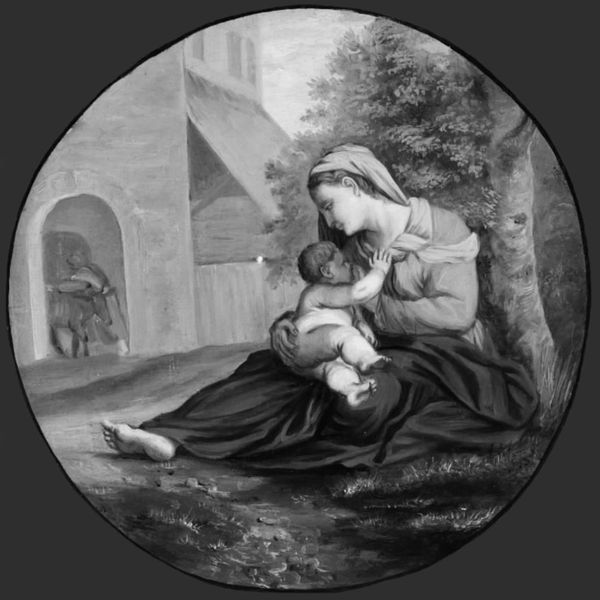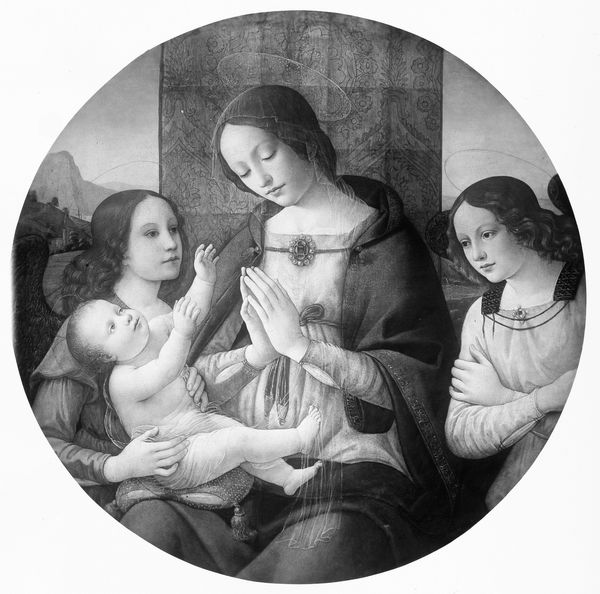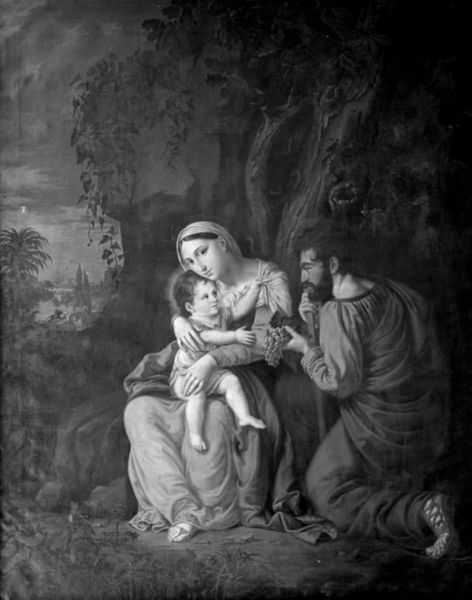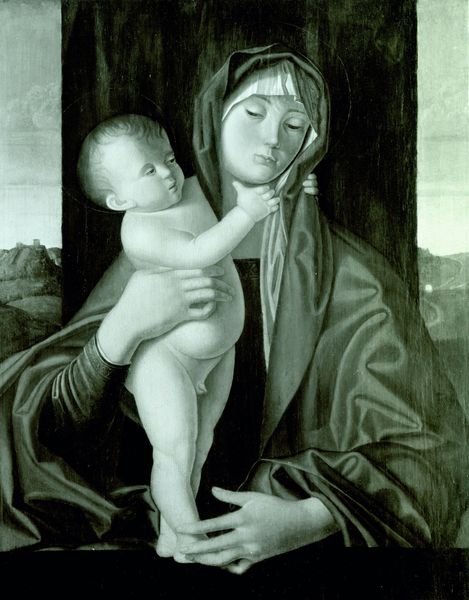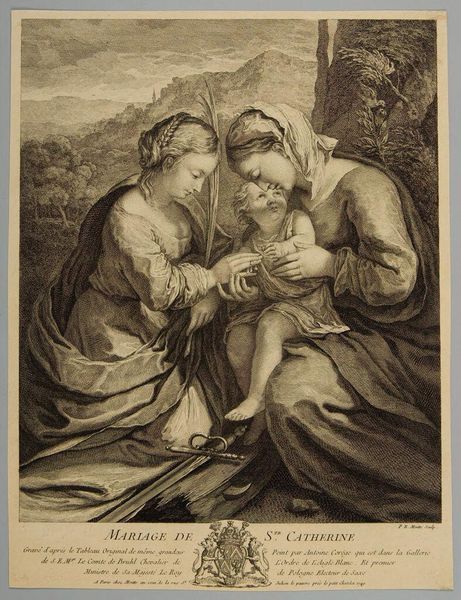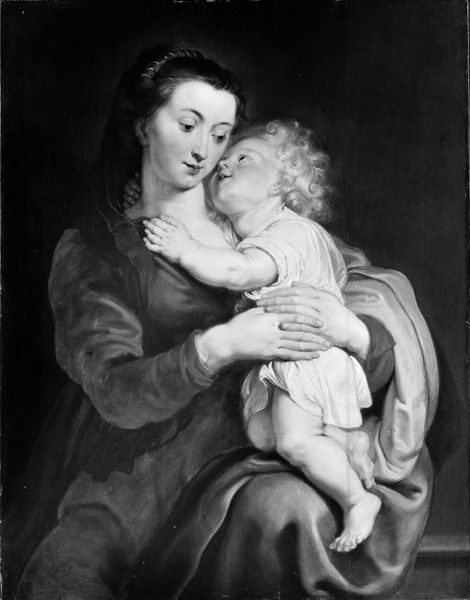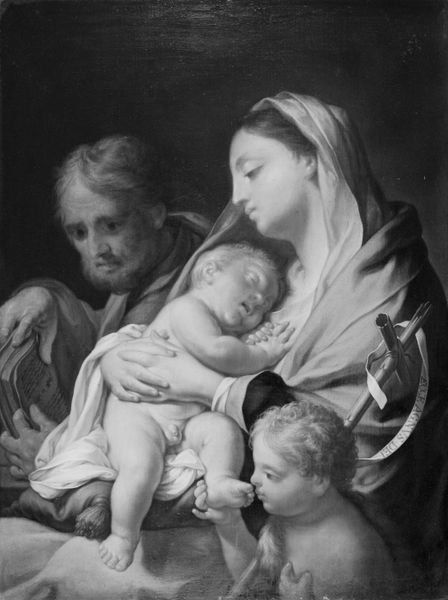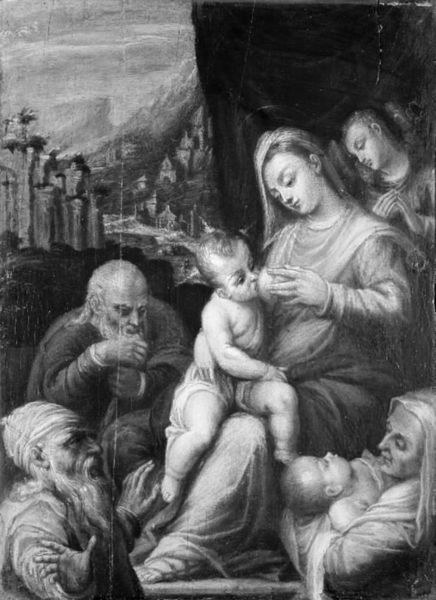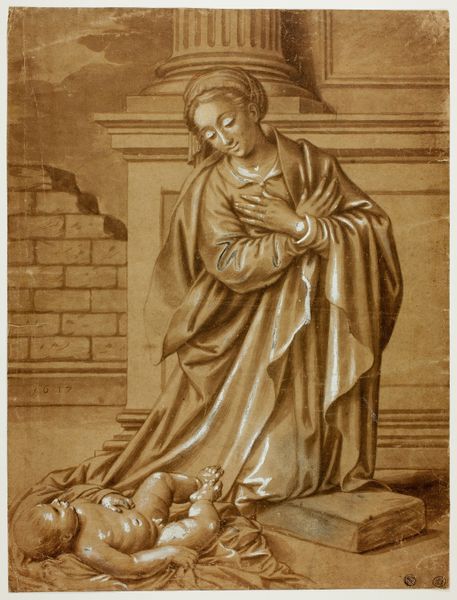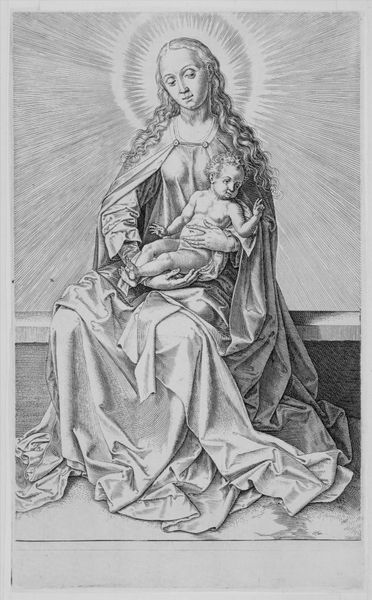
drawing, paper, ink, wood
#
drawing
#
narrative-art
#
landscape
#
figuration
#
paper
#
11_renaissance
#
charcoal art
#
black and white theme
#
ink
#
black and white
#
wood
#
italian-renaissance
Dimensions: 87 cm (None) (None)
Curator: Looking at this circular drawing rendered in ink, we see “The Virgin and St. John Worshipping the Christ.” It's attributed to an anonymous artist, dating sometime between 1480 and 1540, placing it within the Italian Renaissance. Editor: There’s an arresting serenity in this black and white artwork. The subdued tones invite quiet contemplation. What is immediately striking is the almost geometric arrangement of forms within the tondo. Curator: The Renaissance interest in humanist philosophy is clear. Here we witness a convergence of religious, philosophical and socio-cultural views on humanity and piety. It attempts to humanize the Holy figures in very intimate ways. Note that the use of wood and paper during that time reflects certain values too in artwork, regarding its potential in communication. Editor: Yes, I see it in the symbols. Mary in devotion, gazing at Christ who represents innocence itself as he lies almost unguarded, with Saint John reflecting her in mimicry and piety. Even the animals watching at left evoke the Christian association between innocence and the natural world. The circular composition also has a powerful symbolic quality, of eternity. Curator: Absolutely. Its display in SMK, the National Gallery of Denmark, speaks to the evolving interpretations of such pieces. Once central to religious practice, now serving as objects of art-historical study and public reflection. Its significance lies in how this imagery informed not just Renaissance devotional practices, but the way in which national collections become sites of public identity. Editor: Looking closely at it as a work, it really holds a timeless quality; in both its emotional restraint and symbolic depth, it mirrors enduring human experiences, the cycles of love, care and respect – ones we carry from the Renaissance to modern culture. Curator: Agreed, it prompts me to consider the institutional journey artworks like this take. From private devotion, to a place in shaping our broader cultural narratives. Editor: I'm left pondering the ability of an image like this to condense complex emotions into relatively simple forms, enabling a surprisingly deep resonance even after all this time.
Comments
No comments
Be the first to comment and join the conversation on the ultimate creative platform.
